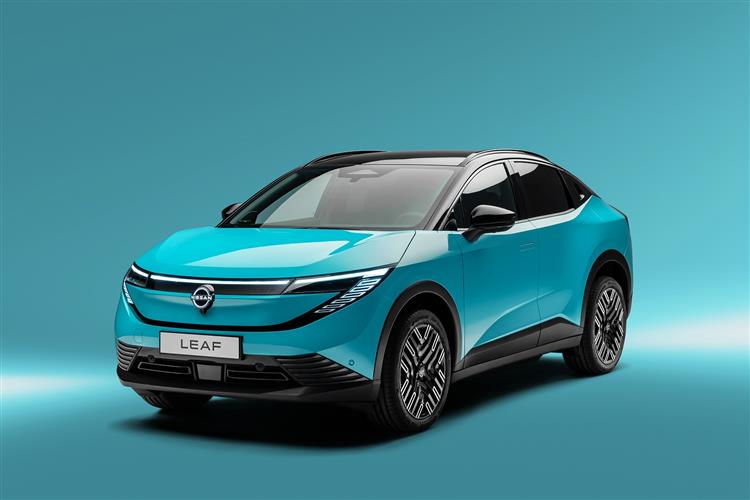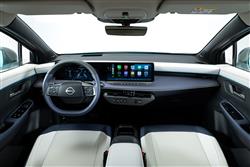THE LEAF BRIEF (some text hidden) --NONE--
By Jonathan Crouch
Nissan's LEAF re-invents itself for a new era. Jonathan Crouch takes a look.
Ten Second Reviewword count: 49
Having rather lost its way with electric cars, Nissan is now back with a third generation LEAF model that aims to return to the sharp end of the family hatch EV class. There's everything you might expect from a LEAF - but also perhaps, a lot that you wouldn't.
Backgroundword count: 161
When the history books on the origins of electric cars are written, one early model will be prominent: the Nissan LEAF. First launched back in 2010 and followed up by second generation version in 2018, it's been described as the 'godfather' of electric cars - the very first volume-selling mainstream family EV. It was once the only game in town if you wanted a spacious electric hatch, but latterly has been a forgotten player in an over-stuffed market full of more modern EV alternatives. A market this third generation model, announced in summer 2025, must approach with new perspective. Having pioneered this segment, it seems curious that this struggling Japanese maker should have let others profit from it, but the lethargy in building on the LEAF legacy has at least allowed Nissan to wait for the more mature battery technology needed for EVs to become a more genuine combustion alternative. Which, we're assured, is exactly what this third generation model is.
Engines and Tech Specword count: 316
The engineering 'Job 1' for this third generation LEAF wasn't hard to fathom; Chief Vehicle Engineer Hiroki Isobe sums it up - "efficiency, efficiency, efficiency". This was, after all, why sales of the MK2 version went so severely off the boil; the 39kWh variant most people bought could only go 168 miles between charges. That was a way up from the MK1 design, whose 24kWh battery only took the car 124 miles at the original 2010 launch, but not nearly good enough. Forget about that now because this MK3 version comes with a choice of much larger and denser 52kWh and 75kWh batteries, giving respective range figures of either 271 or 375 miles. Which is properly up to the VW ID.3/Kia EV3/Skoda Elroq class standard. Bolted to the CMF-EV Renault Nissan Alliance platform is a front-mounted electric motor of a clever 'three-in-one' design, which means it combines the motor, the inverter and the reducer into a single package. This offers 174bhp with the smaller battery or 215bhp with the bigger one and takes the car to 62mph in either 8.6s or 7.6s respectively, en route to 100mph. As with the old model, the brake regen system allows for a 'one-pedal' driving mode, but this time that's also joined by useful regen paddles on the steering wheel giving settings ranging from off to heavy (in terms of the arrest to your forward motion). Beyond the city limits, don't expect a huge amount of driver engagement - but LEAF motoring has never really been about that - and the prodigious 1,937kg kerb weight doesn't encourage it here. What you might hope for this time around is a better quality of ride - which a previous owner should feel is delivered by the redesigned suspension arrangement (MacPherson struts up-front, with a multi-link arrangement at the rear). And you can expect that sleek 0.25Cd drag factor to deliver impressive refinement.
To see the full road test text contact us on 0330 0020 227
Pictures (high res disabled)

.jpg)
|
.jpg)
|
.jpg)
| |||
.jpg)
|
.jpg)
|
.jpg)
| |||
.jpg)
|
.jpg)
|
.jpg)
| |||

|
Statistics (subset of data only)
Min |
Max |
|
Price: |
£30,000.00 (At 4 Jul 2025, est) |
£38,000.00 (At 4 Jul 2025, est) |
Max Speed (mph): |
99 (75kWh) |
|
0-62 mph (s): |
7.6 (75kWh) |
|
Electric WLTP-Rated Driving Range (miles): |
375 |
|
Length (mm): |
4404 |
|
Width (mm): |
1811 |
|
Height (mm): |
1557 |
|
Boot Capacity (l): |
437 |
|



